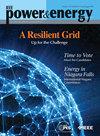从挪威电动汽车的成功中学习:概述
IF 2.2
3区 工程技术
Q2 ENGINEERING, ELECTRICAL & ELECTRONIC
引用次数: 0
摘要
挪威处于从化石燃料向电气化运输部门过渡的最前沿。在2022年上半年,超过五分之四的新乘用车是全电动的,电动汽车(ev)在汽车总数中的份额几乎是五分之一。这种成功的发展有几个原因。挪威的电力供应部门几乎完全由水力发电形式的可再生能源组成,最近还增加了风力发电。因此,挪威的政治家和监管机构不得不考虑电力以外的其他行业,以减少国内的碳排放。在早期阶段,挪威引入了几项措施来减少运输部门的碳排放,运输部门占国内碳排放量的三分之一左右。激励措施以福利的形式引入,如免费停车和乘坐轮渡,使用优先的公共汽车和出租车车道,以及免费的公共收费。然而,向电动汽车转型的最重要因素是汽油或柴油驱动的传统汽车的超高税收,而电动汽车则免税。对于挪威的许多司机来说,仅这些税收就使电动汽车比化石燃料汽车更优惠。本文章由计算机程序翻译,如有差异,请以英文原文为准。
Learning From the Norwegian Electric Vehicle Success: An Overview
Norway is at the forefront of the transition from fossil fuels to an electrified transport sector. In the first half of 2022, more than four out of five new passenger cars sold were fully electric and the share of electric vehicles (EVs) in the total car fleet was almost one out of five. There are several reasons for this successful development. Norway’s electricity supply sector is almost entirely made up of renewable energy in the form of hydropower, with the recent addition of wind power. As a result, Norwegian politicians and regulators had to consider other sectors than electric power to reduce domestic carbon emissions. In the early stages, Norway introduced several measures to reduce carbon emissions in the transport sector, which contributed to about one-third of domestic carbon emissions. Incentives were introduced in the form of benefits, like free parking and ferry rides, access to prioritized bus and taxi lanes, and free public charging. However, the most important factor for the transition to EVs was the exceptionally high taxes for conventional cars fueled by gasoline or diesel, from which EVs are exempt. For many drivers in Norway, these taxes alone have made EVs more favorable than their fossil fuel counterparts.
求助全文
通过发布文献求助,成功后即可免费获取论文全文。
去求助
来源期刊

IEEE Power & Energy Magazine
工程技术-工程:电子与电气
CiteScore
5.10
自引率
0.00%
发文量
145
审稿时长
>12 weeks
期刊介绍:
IEEE Power & Energy Magazine is dedicated to disseminating information on all matters of interest to electric power engineers and other professionals involved in the electric power industry with a focus on advanced concepts, technologies, and practices associated with all aspects of electric power from a technical perspective in synergy with nontechnical areas such as business, environmental, and social concerns. IEEE Power & Energy Magazine keeps its readers up-to-date on the latest technological advancements, industry news, business trends and strategies, products, and publications. Important newsworthy items concerning the worldwide activities and achievements of IEEE Power & Energy Society (PES), its organizational units, and its individual members are also included.
 求助内容:
求助内容: 应助结果提醒方式:
应助结果提醒方式:


